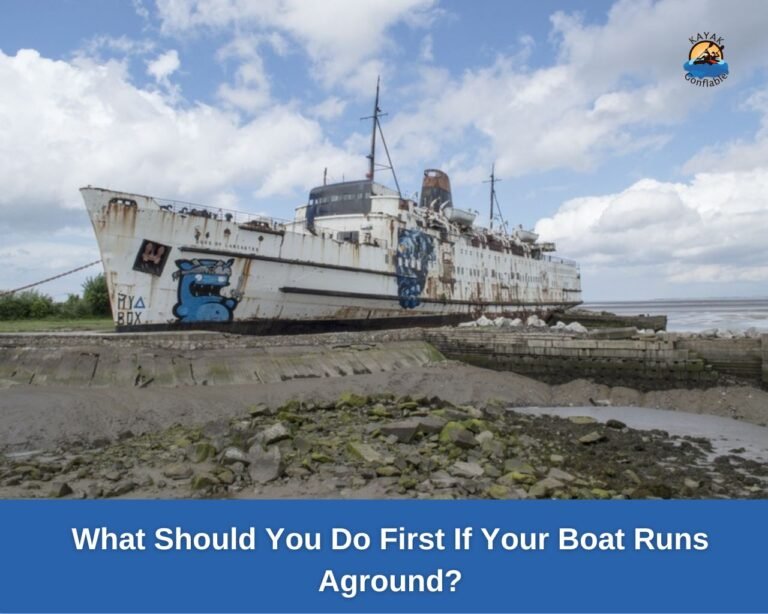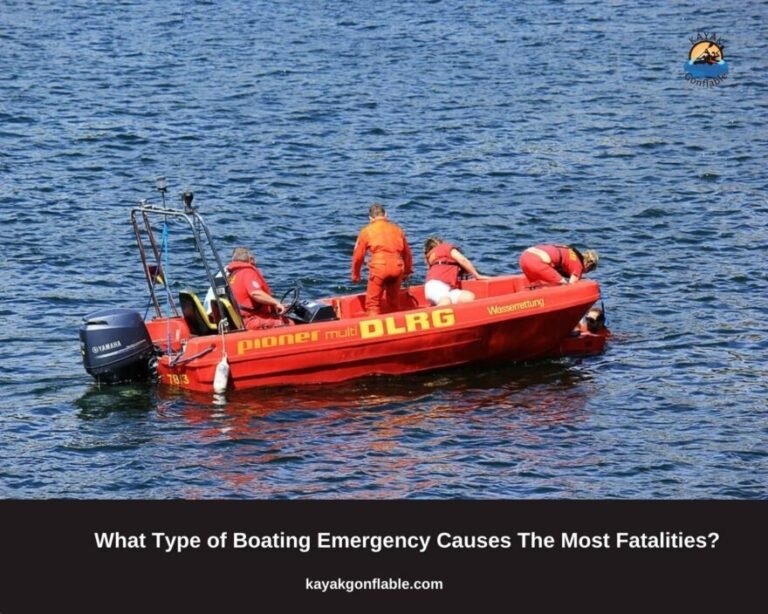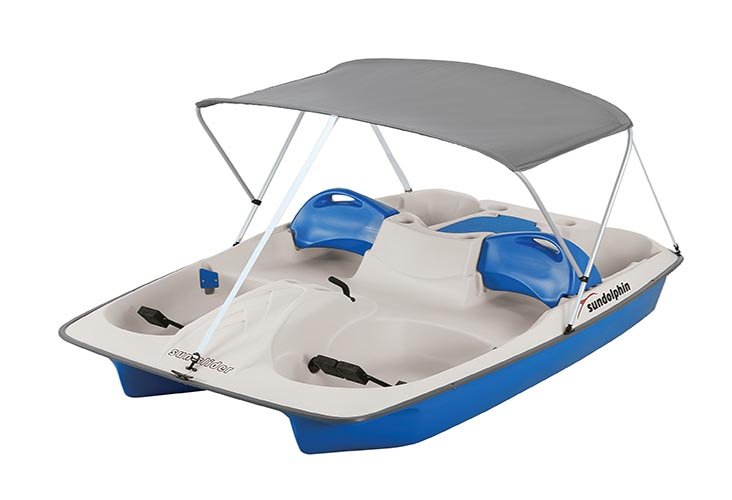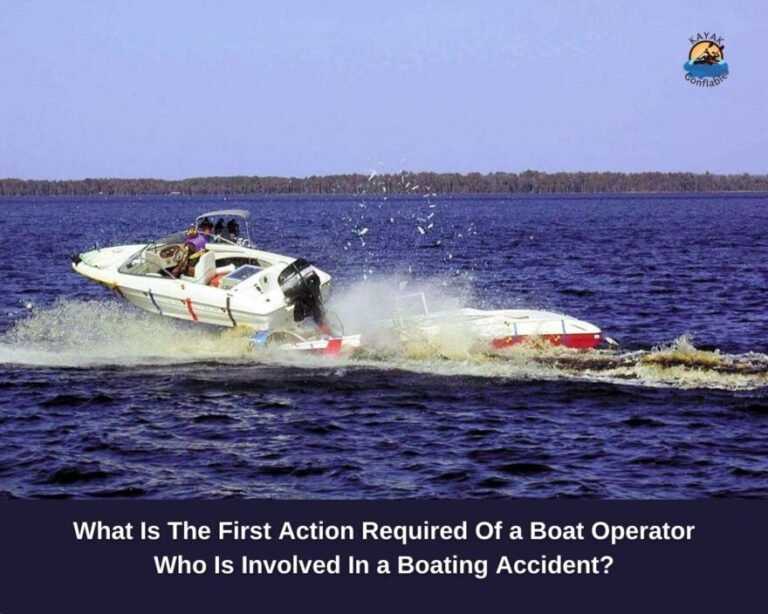How Does Having A Pre-Departure Checklist Help You?
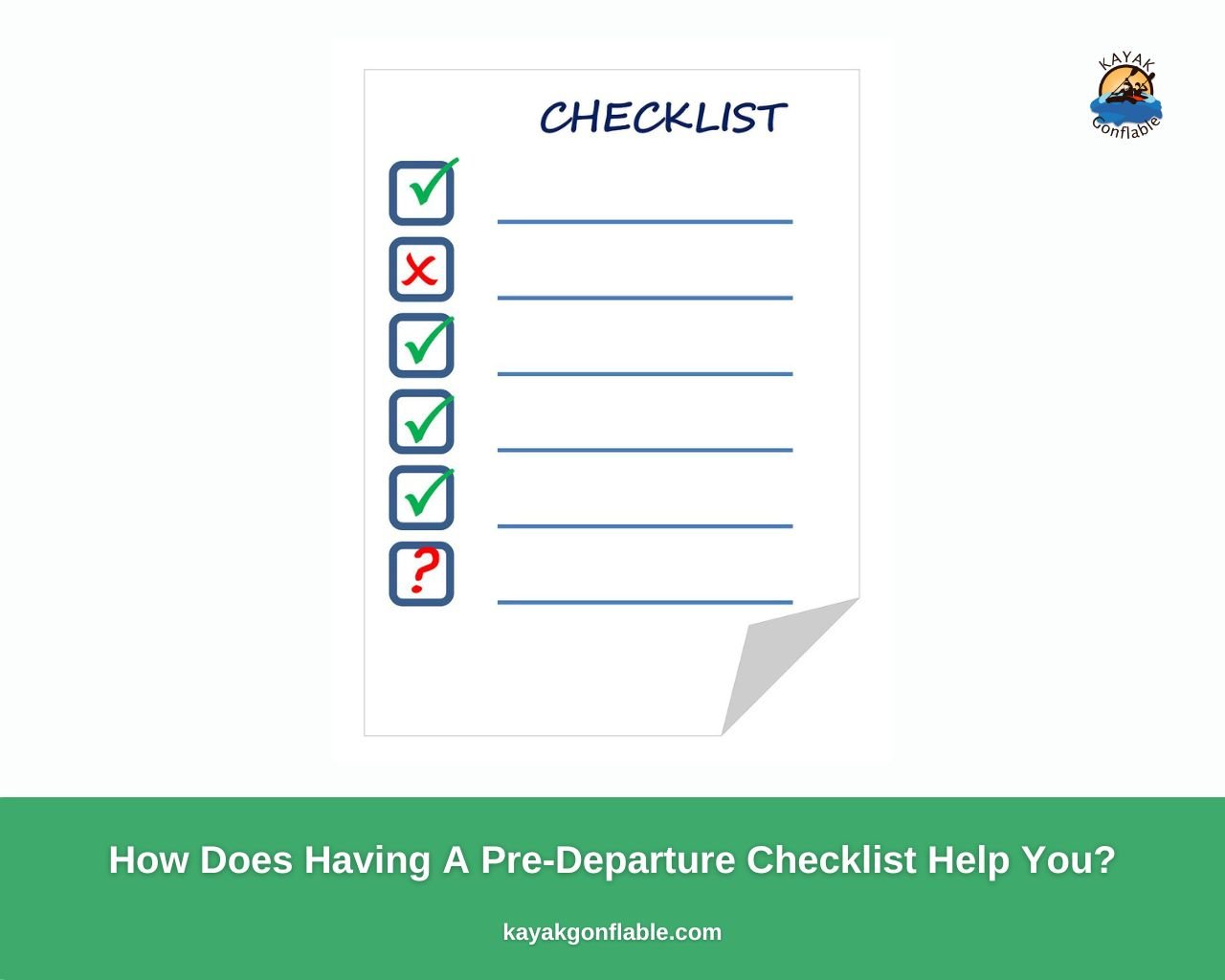
Sailing is undeniably a fun activity; but as with all things, it also carries some risks. Ensuring the safety of everyone on the water is an enormous task that seemingly has no end.
To tackle this task, watercraft have to be deemed fit for the water before sailing, some regulations have to be followed on the water (like always wearing a life jacket), and still, more safety precautions must be followed to safely dock the vessel.
Pre-departure checklists focus on what should be done before sailing to ensure sailors’ safety.
What Is A Pre-Departure Checklist?
A pre-departure checklist is a list of items that should be completed before boarding a vessel. These items may include confirming the safety of passengers and crew, ensuring that all supplies are accounted for, checking the boat’s fuel levels, verifying that any required licenses or permits are in hand, and making sure all passengers are aware of safety procedures.
By completing a pre-departure checklist, passengers can ensure that they have taken the necessary precautions before departing on their voyage.
Pre-departure checklists are used by mariners to ensure vessels are seaworthy and equipped to handle any occurrence at sea before sailing to ensure their safety. These checklists help prevent boating accidents.
How Does A Pre-Departure Checklist Help You?
A pre-departure checklist can help you stay organized and ensure that you have prepared everything necessary before you leave for your trip. This checklist can also aid in avoiding any last-minute problems that might arise.
Pre-departure checklists help you keep track of your itinerary, packing list, and important contacts. They can also help you avoid potential problems or delays on your trip. By taking the time to complete a pre-departure checklist, you will be able to save yourself time and hassle on your trip.
What should be included on a pre-departure checklist?
The pre-departure checklist should include items such as:
- Vessel registration information (or insurance policy)
- Checklist of supplies and equipment
- Chart of navigation
- Copy of vessel’s certificate of registry
- A clear map of the area you will be visiting
- A weather report
- Safety plan
- VHF radio
- Emergency flares
- Fire extinguisher
- Tool kit
- Sea charts or other navigational aids
Depending on the boating destination, other items may also be appropriate for inclusion on the checklist. A pre-departure checklist is a valuable tool for anyone who plans to take a boat out on the water.
Is It Compulsory To Have A Pre-Departure Checklist?
There is no definitive answer to this question as it depends on personal preferences. Some people may feel that a pre-departure checklist is unnecessary while others may view it as an essential part of any boat outing.
Ultimately, the decision of whether or not to have a checklist is up to the individual. However, there are some things everyone should keep in mind before leaving port; general marine safety procedures should always be adhered to ensure safety.
While checklists may not be mandatory, their effectiveness cannot be overemphasized. Preparation is key when embarking on a boating adventure.
Whether you are taking a quick spin across the bay or spending the day cruising the coastline, having a pre-departure checklist will help to ensure a safe and enjoyable trip.
Who Is Responsible For Performing The Pre-Departure Check Of A Recreational Boat?
Pre-departure checks are an important part of the safety process for recreational boaters. Who conducts these checks varies depending on the type of boat, but in general, someone with authority over the vessel (the captain or operator) is responsible for performing the check.
This person should be familiar with the safety procedures and make sure they are being followed. The Coast Guard recommends that all recreational vessels be inspected and their equipment properly maintained at least once every 12 months.
The pre-departure check should include an inspection of the engine, bilge pumps, lights, antennas, and other items that may be affected by weather or sea conditions.
Vessels must be deemed seaworthy before being allowed to sail, and the task of ensuring that falls to the boat operator. Failure in this task could cost the lives of several people at sea.
It Is A Good Idea For All Boaters To Use A Pre-Departure Checklist. Why?
A pre-departure checklist is a great idea for all boaters, but especially for novice boaters. It helps keep your trip safe by making sure everything is checked and ready before you leave. Here are some reasons why using a pre-departure checklist is a good idea:
- It can help prevent accidents. If something goes wrong on your trip, having a pre-departure checklist will help you remember what to do.
- Pre-departure checklists can reduce the chances of forgetting something important, and help you stay focused during pre-trip planning.
- Having a checklist makes it easier to catch any potential problems or issues before they become serious.
- Checking off items on a checklist can also help to put your mind at ease before you set out on your voyage. They help organize and simplify your boating preparations.
- Checklists help avoid any surprises on the water and make the sailing or boating experience more enjoyable.
- Pre-departure checklists ensure you have all the legal requirements before sailing.
Who Is Responsible For Reviewing A Pre-Departure Checklist Before A Boat Outing?
Pre-departure checklist reviews are necessary for many reasons, but who is responsible for conducting them before a boat outing is often unclear.
It can be the captain, the vessel operator, or someone designated by the captain, such as the first mate. Regardless of who conducts the review, everyone on board must be familiar with the contents of the checklist.
This way, any potential problems can be identified and corrected before departure. The captain of the vessel must also ensure that all deckhands know their responsibilities and have completed their training.
Preparing For a Boat Outing
Preparation is the key to a successful voyage. A well-prepared boater is more likely to have a safe and enjoyable outing. To ensure your trip runs smoothly, follow these tips for a pre-departure checklist:
- Check The Weather Forecast And Plan For Any Potential Changes.
- Make Sure All Supplies Are Packed And Ready To Go.
- Test All Devices And Equipment Before Departure.
- Check The Boat’s Engine And/Or Battery Status.
- Remove Any Excess Water And Debris From The Boat.
- Make Sure All Reels And Lines Are Taut And In Good Condition.
- Create A Personal safety plan to be followed in the event of an emergency.
What Is An Anchor?
An anchor is a device that is used to secure a boat to a pier, dock, or other anchoring points. Anchors come in many different shapes and sizes, but all aim to provide the same basic function: holding the boat in place.
There are two main types of anchors: fixed anchors and dynamic anchors. Fixed anchors are typically heavier and slower to set than dynamic anchors, but they are more stable. Anchors are typically made of metal, but can also be made from other materials.
An anchor’s weight provides the necessary leverage to hold the boat in place. Anchors can be either an iron weight, chain, line, or cable.
When Should A Vessel Be Anchored?
Anchoring is a common practice for vessels at anchor in harbors and other confined waters. There are many factors to consider when deciding when to anchor: the current, wind, tides, weather conditions outside the anchorage, the recent history of the anchor point, and harbor conditions.
Generally, vessels are anchored at docks or piers to come to shore or take/discharge cargo. Knowing when to anchor is all well and good. However, whether you should anchor at a particular place is another matter altogether.
The answers to the following questions will let you know if a place is safe to anchor at.
- What kind of ground is the anchorage on?
- Is the anchorage protected from bad weather?
- Is the anchorage deep enough for your vessel?
- What are the currents and winds like in the area?
What Is the Importance of Anchoring?
Anchoring can be a life-saving strategy while traveling on water, especially during night travel. It is important for several reasons.
- Anchoring helps boats maintain their position in the water and prevents them from drifting away.
- Anchoring also reduces the need for sailors to constantly watch for boats in their vicinity, which can reduce the amount of time spent on watch.
- Anchoring can also help sailors find safe docking areas and safe harbors when they arrive at their destination.
- Anchoring to a secure object allows boaters to remain in their vessel in case of a loss of propulsion or other emergencies.
- Anchoring allows vessels to remain stationary in the water while conducting routine operations such as mooring and docking. Anchoring also ensures a vessel does not drift away from its dock or pier in strong currents or during storms.
- A properly anchored vessel also reduces the chance of becoming lost or stranded in open water.
Which Anchors Are A Good Choice For Most Recreational Boats?
Anchors are one of the most important parts of a recreational boat. There are different types of anchors suitable for different types of recreational boats.
A good anchor should have a large enough weight to hold the boat in place, but not be so heavy that it takes too long to set it, and it should be easy to unhook. There are two main types of anchors: swivel and chain.
Swivel anchors are usually smaller and lighter, making them a good choice for smaller recreational boats. There are several anchors available on the market today, but the top choice for recreational vessels is the Danforth or fluke-style anchors.
The recreational watercraft more suited to it generally have an overall length of 30 inches or less. Fluke anchors are easy to fold and store in stow compartments and provide considerable power considering their small size.
They are the ideal choice for anchors. Other anchors on the market include mushroom anchors, Lewmar Deltar anchors, Rockna anchors, and Grappling hook anchors.
Having a pre-departure checklist helps you ensure that you have packed all of the necessary items and have accounted for all possible scenarios. It also allows you to plan your route and departure time, ensuring that you are not rushed on the day of your trip.
It helps to keep you organized and calm, which can be crucial when traveling by boat or airplane. Pre-departure checklists also ensure you are aware of the dangers associated with water travel and take precautions to mitigate them.
Checklists are also useful in my personal life. They help ensure that everything is in order before you leave, which can help avoid any problems while you are away.
If you are planning on traveling by boat, it is important to create a checklist and use it as a guide to make sure that you have everything you need. By being prepared, you can minimize the chances of something going wrong and ensure a safe and enjoyable trip.
How do you prepare your vessel prior to departure time?
No matter where you are in the world, sailing is a popular way to travel. However, sailing can be extremely dangerous. The best way to ensure your safety while sailing is to prepare your vessel properly.
Preparation for a long trip can be daunting, but it is crucial to have everything in order to make the journey as smooth as possible. Here are some tips for preparing your vessel before departure time:
- Make sure all equipment is in working order and properly packed.
- Check fluids, brakes, and other critical systems to ensure they are in good condition.
- Clean the vessel inside and out, including all windows and doors.
- Check the sails and rigging.
- Check the deck and railing for damage.
- Clean any surfaces that may collect water and sediment, such as the railing and deck.
- Prepare your food and drink supplies in advance.
- Check the weather forecast and make sure there are no major storms headed your way.
Who is responsible for performing the pre-departure check of a pleasure craft?
Pre-departure checks on pleasure craft vary depending on the vessel and its size. There are a variety of individuals who may be responsible for performing the pre-departure check of a pleasure craft.
These individuals could include the captain, the first mate, or someone else in charge of the vessel. However, most often, the captain is responsible for performing a pre-departure check. This check includes verifying that all required documents are in place and that any safety equipment is properly attached.
Additionally, the captain may also wish to inspect the vessel for any signs of neglect or damage. The pre-departure check is important because it helps to ensure that the pleasure craft is in good condition and ready to go.
In some cases, however, such as when a passenger vessel is chartered for private use, the owner or operator may be responsible for the pre-departure check.
What is a vessel departure?
Vessel departures are defined as the act of leaving a harbor or port. They can happen when the ship leaves on its own or when it is escorted by a ship or naval force. Vessel departures can be ceremonial or practical and can occur at any time of day or night.
Vessel departures can be voluntary or involuntary. Voluntary vessel departures include those made by vessels of their own will, while involuntary vessel departures involve vessels that are compelled to leave a port due to weather, mechanical problems, or other circumstances.
At its simplest, a vessel departure is a ceremony in which the captain of the ship officially declares that the ship is ready to set sail.
A vessel departure can also involve a series of formalities, such as clearance from customs and immigration, signaling to other ships in the vicinity that the voyage has begun, and firing of cannons or other warning signals.
What should be part of a pre-departure checklist?
When planning a boating outing, it is important to have a pre-departure checklist prepared to ensure a safe and enjoyable experience. A pre-departure checklist for a boating outing should include items such as:
- Checklist of gear to bring
- Boat registration and safety paperwork
- Fire extinguisher
- Lifejackets for everyone on board
- Know the local weather conditions
- Checking the boat’s batteries
- Making sure there is enough fuel
- Packing an emergency kit
- Ensuring that all safety equipment is properly fitted.
What are fluke anchors used for?
Fluke anchors are commonly used in boating as a means of securing a vessel to the ground. They have a metal or polymer cone at the end of a long, thin wire shaft.
When the anchor is dropped into the ground, the cone penetrates the surface and creates a secure hold. They are the most recommended anchors for recreational vessels.
What is the most common anchor used in the US?
The Bruce or Claw anchor is the most common anchor in the US. Anchors are an important part of boating in the United States. They are used to secure boats to the ground and can be either permanent or temporary.
Permanent anchors are typically larger and heavier, while temporary anchors are lighter and easier to use. Permanent anchors are usually used in deeper water, while temporary anchors are more commonly used in shallower water.
Most boats have at least one anchor, and many have multiple anchors. Anchors can be used for a variety of purposes, including mooring, docking, and holding a boat in place in rough water.
Who is responsible for explaining proper waste disposal procedures to passengers on a boat?
When traveling on a boat, it is important to be aware of proper waste disposal procedures. Not all boats have designated areas for throwing away waste, and not all passengers are familiar with the proper way to dispose of their waste.
Someone on the boat must be responsible for explaining these procedures to passengers. This person can be a tour guide, host, or member of the crew. Boaters are responsible for ensuring that proper waste disposal procedures are explained to passengers on their boats.
Proper waste disposal procedures include properly disposing of food waste, liquid waste, and solid waste. Boaters should also ensure that passengers do not litter or refuse to dispose of their waste in designated areas.
Crew members are responsible for cleaning up after themselves and disposing of any waste they create.
What should you require from others who operate your vessel?
If you’re the captain of a boat, there are some basic things you should require from the people who operate it. First and foremost, these crew members need to be able to handle the boat safely and be reliable when it comes to their duties.
They should be of age and trained in handling watercraft. They also need to be competent in using the boat’s equipment and know how to maintain it.
Finally, captains should expect their crew to act responsibly and follow all safety guidelines when out on the water. Furthermore, it is important to have requirements in place for those who are renting or using the vessel.
These requirements should include things such as liability insurance, proof of ownership, and the ability to provide proof of seaworthiness. Additionally, it is important to have a set schedule for when the vessel will be used and make sure that everyone who uses the vessel knows when these restrictions will apply.
Why must you give your passengers a pre-departure briefing before leaving the dock?
Pre-departure briefings are a vital part of ensuring the safety of passengers boarding vessels. By providing passengers with information about the vessel, the voyage, and other hazards they may face, pre-departure briefings help to ensure a safe and enjoyable experience while on board.
Pre-departure briefings are also an important tool for law enforcement in the event of an emergency. Some reasons for pre-departure briefings are enumerated below:
- They allow passengers to gather any last-minute information they may need.
- It allows the crew to get to know the passengers and ensure everyone is aware of the safety precautions that will be in place during the voyage.
It provides the crew with a summary of what to expect during the voyage and helps passengers feel less anxious and prepared for their journey.

